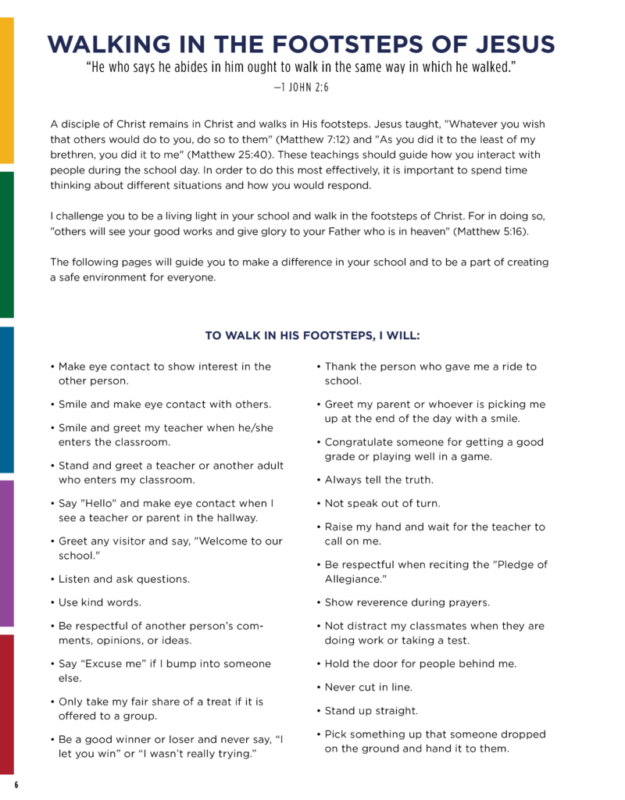Experience: The Architect of the Mind
Experience shapes our thoughts, behaviors, and ultimately, our character. This is particularly true in the formative years of childhood, where each interaction and observation leave a lasting imprint. The mind of a child is like a sponge, absorbing not just information but also the emotional and moral undertones of their environment. Therefore, consistent education in virtue is crucial; it helps “wire” our children for goodness, laying the foundation for a life grounded in positive values and ethical behavior.
The Importance of Intentional Virtue Education

Virtue doesn’t develop in a vacuum; it flourishes through education and cultivation. As educators, parents, and caregivers, it’s our responsibility to point out opportunities for practicing virtue in everyday situations. By doing so, we help children recognize and internalize these virtues, enabling them to navigate the complexities of life with honesty and compassion.
One practical approach is through visual aids and tools that make virtue more tangible for young minds. For example, consider the “Walking in the Footsteps of Jesus” on pages 6-11 in the Education in Virtue 2024-2025 Elementary Student Planner. It features a student walking throughout a school building, with footsteps leading the way. “Hot spots” in a school are illustrated where there could be a positive or negative experience for a student.
Using School Maps as Teaching Tools
The concept of mapping out a school to highlight these hot spots is a creative way to encourage virtue. By identifying areas where students might face challenges—whether it’s the playground, cafeteria, or hallways—we can proactively address potential issues before they escalate. These maps can serve multiple purposes.
First, they provide a visual cue for students to be more mindful of their behavior in these areas. When children are aware that certain spots require extra attention to the various virtues such as responsibility, gratitude, or courage, they are more likely to engage in positive behavior. For example, a student might think twice before joining in on teasing a peer if they recognize that the hallway is a “hot spot” where virtues like respect and kindness should be practiced.
Secondly, these maps can be a tool for adults to foster positive interactions. Teachers, counselors, and even parents can use these visual aids to discuss potential challenges with students and brainstorm strategies for overcoming them. For instance, a teacher might walk a student through the map, pointing out where they can practice virtues like honesty in the classroom or generosity in the cafeteria. These conversations can help children see the connection between their actions and the broader school environment, reinforcing the importance of virtue in daily life. This is the practical application of what virtues “look like” and “sound like.”
Addressing Negative Experiences
Another powerful use of this map is to address areas where students have had negative experiences. If a child feels unsafe or bullied in a particular part of the school, having them point out these areas on the map can be an effective way to open dialogue and find solutions. It can also empower the child by giving them a concrete way to express their feelings, which is especially important for younger students who may struggle to articulate their emotions. This is a way for a child to be safe, seen, and soothed, as presented in the recent book, Raised in Grace®.
This approach helps resolve immediate issues and teaches children the importance of communication. When students know that their concerns are taken seriously and that there are proactive steps they can take to improve their environment, they are more likely to develop a sense of security and belonging at school.
Encouraging Peer Leadership and Responsibility
An additional layer to this approach can involve older students in the process. A school counselor once suggested that older students could create posters for different areas of the school, reminding younger students to practice virtue. This not only reinforces the concept of virtue for the younger children but also gives older students a sense of responsibility and leadership.
By encouraging older students to model virtuous behavior and guide their younger peers, we create a community of learners who support and uplift one another. This peer-led initiative can be particularly effective because students often look up to and emulate those who are slightly older than them.
A Year of Mercy and Virtue
As we embark on a new school year, our theme of “works of mercy” provides an excellent framework for cultivating a culture of virtue in our schools. Mercy, in its various forms—whether it’s showing kindness to a struggling classmate or forgiving someone who has wronged us—embodies the very essence of virtue. By integrating this theme into our daily interactions and the physical environment of our schools, we can help students experience the profound connection between virtuous behavior and personal happiness.
Conclusion
Ultimately, our goal is to ensure that our students’ experiences at school lead them to happiness and secure attachment. By intentionally cultivating virtue through educational tools like school maps and encouraging positive peer interactions, we can help shape the minds of our children in ways that will benefit them throughout their lives. As experience continues to be the architect of their minds, let’s ensure that it builds a structure rooted in goodness, kindness, and compassion.

You May Also Like
Download Virtue Wallpapers
Interactive Virtue Tree
Raised in Grace®